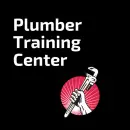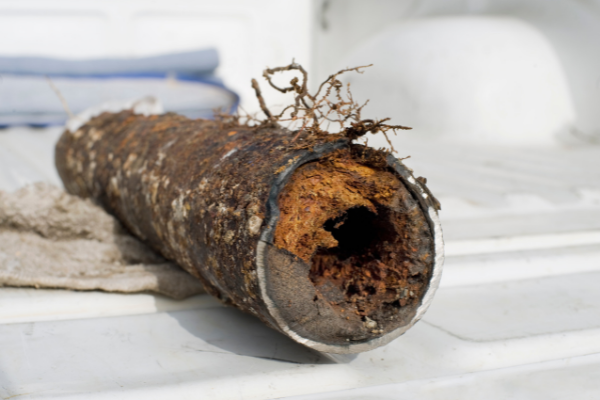If you’ve never had roots in your sewer line, experiencing it for the first time could be shocking. A sewer line with roots often begins under the radar, soon leading to large cracks and obstructed pipes.
If you are experiencing backup issues or clogging within your sewer system, you may need a sewer line inspection to find the source of the issue. Sewer line jetting could also assist in clearing obstructions, such as small roots, to clean out your pipes and find any cracks or issues.
This article will discuss how roots get into a sewer line, the warning signs, how to deal with it, and how to prevent it.
Finding Roots in Your Sewer Line
While seemingly harmless, roots are persistent and have the slow-and-steady ability to make their way into the pipes of a sewer line. They can and will enter everything from clay to cast iron pipes by finding a weak point – such as a tiny crack – and exploiting it.
Did you know a tree’s roots can spread to three times the size of the tree’s leaves? If your home has many trees around it, you’re at risk of finding roots in your sewer line.
Water from the sewer line will attract surrounding roots. As they make their way into the pipe, they will expand. Soon, their hair-like ends become covered in tissue paper, debris, and grease. This could cause clogged pipes, burst pipes, or wastewater flooding on your property or even back to your home.
Warning Signs of Roots in a Sewer Line
Unfortunately, most roots are only discovered in sewer lines once they’ve caused issues for the homeowner.
There are a few warning signs when it comes to roots in the sewer line. Homeowners may notice slow draining, a gurgling sound from toilet bowls, bad odors coming from the drains, small sinkholes in the yard, or wet spots around floor drains near the laundry machine.
Getting Rid of Roots in Your Sewer Line
Make sure you don’t ignore the symptoms of roots in your line – the sooner you notice the warning signs, the easier your repairs should be. If you don’t have any warning signs yet, use a preventative sewer line inspection and/or jetting (discussed below) to stop root infiltration before it happens.
If the root infiltration is small, you can use sewer line jetting or other repair methods that don’t involve digging up your yard.
For a more problematic root invasion – especially if a pipe has burst – you may need to opt for a full sewer line replacement.
Sewer Line Inspection
Most sewer line inspections are done on two occasions: when a problem is noticed within the system or when completing an inspection period on a home you want to purchase.
While both are excellent times for an inspection, you may also want to plan routine inspections on your home every 3-5 years for preventative measures. Older homes in particular should have routine sewer inspections to prevent potential mishaps like roots in the pipes.
How It’s Done
Sewer line inspections are usually completed with a camera attached to a flexible, sturdy line made of metal. This is called a snake line. Snake lines are used to both clear and pass through pipes anywhere from under concrete, to behind walls, to beneath a building’s foundation. So long as you can access the pipe, a sewer line inspection can be done.
As the snake line makes its way through the pipes, the waterproof camera’s video will reveal any roots, cracks, collapsed lines, clogs, or other problems in your sewer line.
Who Does It?
Sewer line inspections should be completed by a trained and certified inspector. These inspectors are trained in plumbing work.
Some home inspectors will not include a sewer line inspection in their process, which means you’ll need to hire out or pay extra for this service. Considering that it could save you the expenses of a burst pipe later on, it is well worth the price.
Fixing Issues Found During Inspection
If the inspection reveals any issues, the professional should also be able to list the possible solutions.
If major issues are revealed during an inspection of a home on the market, you can assess repair costs, discuss them with the seller, and choose to either move forward or seek out a less-complicated deal elsewhere.
Sewer Line Jetting
Sewer line jetting is a way of clearing out clogged sewer lines and drains. It uses pressurized water streams to dislodge and remove obstructions including roots, cast iron build-up, and debris.
Jetting is used to both clear out clogged pipes and for routine maintenance to prevent clogged lines.
How It Works
Sewer line jetting uses an engine with enough horsepower to “fuel” a high-pressure hydro-pump. Much like in pressure washers, the pressurized water is rated by PSI.
The water then flows through a hose created for pressurized jetting. The hose ends in a jet nozzle that is chosen depending on the pressure needed.
When the nozzle is correctly installed in the sewer line entry point, the water stream can be directed inwards to clean out the pipe. The water stream can also be changed during this time.
Sewer Line Jetting for Clogged Pipes
If your sewer line inspection showed clogged pipes, you may complete sewer line jetting to get things back up and moving. Forward jets are best for unblocking clogged sewer lines; however, the jet you use should be determined by a professional who knows exactly what you’re trying to clear out and how much pressure is necessary.
Summing Up
The lovely trees on your lawn could have their roots wrapped around your sewer line – quite literally. Once they find a way into the pipes, roots can cause pipe blockage, enlarge cracks, burst pipes, and even cause flooding on your property.
Having a sewer line inspection every few years could save your home from a sewage catastrophe. If you spot a blockage early on, sewer line jetting will likely be able to clear your line and help avoid future mishaps. If you’re looking to buy a home, a sewer line inspection should be at the top of your list.
A small investment today could save you headaches, time, and lots of money tomorrow.

